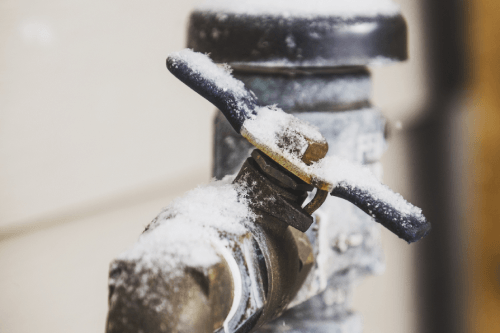Critical Strategies for Avoiding Frozen Pipes in Winter
Critical Strategies for Avoiding Frozen Pipes in Winter
Blog Article
How do you feel in relation to How to prepare your home plumbing for winter weather?

Winter can damage your plumbing, particularly by freezing pipelines. Here's exactly how to prevent it from happening and what to do if it does.
Intro
As temperature levels drop, the threat of frozen pipelines rises, potentially leading to expensive repairs and water damages. Comprehending just how to prevent icy pipelines is crucial for house owners in cool environments.
Recognizing Frozen Pipes
What causes pipelines to ice up?
Pipes ice up when exposed to temperatures listed below 32 ° F (0 ° C) for expanded durations. As water inside the pipelines freezes, it increases, taxing the pipe wall surfaces and potentially creating them to rupture.
Risks and problems
Icy pipelines can result in supply of water disruptions, residential or commercial property damage, and costly repair work. Ruptured pipes can flooding homes and trigger comprehensive architectural damage.
Indicators of Frozen Pipes
Identifying frozen pipelines early can stop them from bursting.
Just how to identify frozen pipes
Seek decreased water flow from taps, uncommon odors or sounds from pipes, and visible frost on subjected pipelines.
Prevention Tips
Protecting at risk pipelines
Cover pipelines in insulation sleeves or make use of heat tape to secure them from freezing temperature levels. Concentrate on pipes in unheated or exterior areas of the home.
Heating methods
Keep interior spaces appropriately warmed, specifically areas with pipes. Open cupboard doors to permit warm air to circulate around pipes under sinks.
Securing Exterior Pipes
Garden pipes and exterior faucets
Separate and drain pipes garden hose pipes before winter. Set up frost-proof faucets or cover outdoor taps with shielded caps.
What to Do If Your Pipes Freeze
Immediate activities to take
If you think frozen pipelines, keep faucets open up to eliminate stress as the ice melts. Utilize a hairdryer or towels taken in warm water to thaw pipelines gradually.
Long-Term Solutions
Structural modifications
Consider rerouting pipes far from outside wall surfaces or unheated locations. Add additional insulation to attics, basements, and crawl spaces.
Upgrading insulation
Purchase top notch insulation for pipes, attics, and walls. Proper insulation helps keep consistent temperatures and decreases the threat of frozen pipes.
Verdict
Protecting against icy pipelines calls for aggressive steps and fast responses. By understanding the reasons, indications, and preventive measures, home owners can safeguard their pipes throughout winter.
5 Ways to Prevent Frozen Pipes
Drain Outdoor Faucets and Disconnect Hoses
First, close the shut-off valve that controls the flow of water in the pipe to your outdoor faucet. Then, head outside to disconnect and drain your hose and open the outdoor faucet to allow the water to completely drain out of the line. Turn off the faucet when done. Finally, head back to the shut-off valve and drain the remaining water inside the pipe into a bucket or container. Additionally, if you have a home irrigation system, you should consider hiring an expert to clear the system of water each year.
Insulate Pipes
One of the best and most cost-effective methods for preventing frozen water pipes is to wrap your pipes with insulation. This is especially important for areas in your home that aren’t exposed to heat, such as an attic. We suggest using foam sleeves, which can typically be found at your local hardware store.
Keep Heat Running at 65
Your pipes are located inside your walls, and the temperature there is much colder than the rest of the house. To prevent your pipes from freezing, The Insurance Information Institute suggests that you keep your home heated to at least 65 degrees, even when traveling. You may want to invest in smart devices that can keep an eye on the temperature in your home while you’re away.
Leave Water Dripping
Moving water — even a small trickle — can prevent ice from forming inside your pipes. When freezing temps are imminent, start a drip of water from all faucets that serve exposed pipes. Leaving a few faucets running will also help relieve pressure inside the pipes and help prevent a rupture if the water inside freezes.
Open Cupboard Doors
Warm your kitchen and bathroom pipes by opening cupboards and vanities. You should also leave your interior doors ajar to help warm air circulate evenly throughout your home.

Do you enjoy reading about Winter Plumbing Precautions: Preventing Frozen Pipes? Put a comment directly below. We would be happy to know your suggestions about this entry. In hopes to see you back again in the near future. Are you aware of another person who is interested in the topic? Feel free to promote it. We recognize the value of reading our article about 6 Ways to Prevent Frozen Pipes.
Book Services Report this page